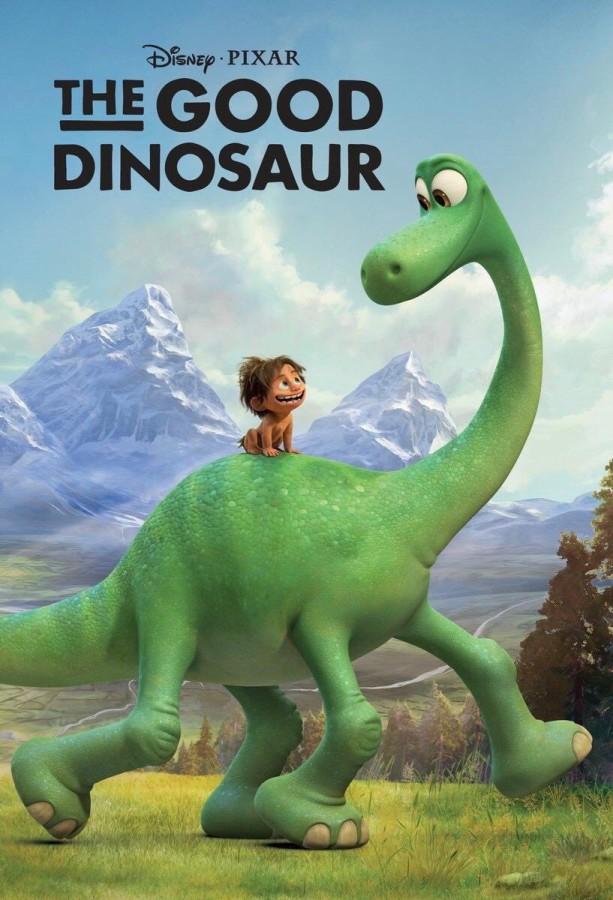Pixar, known for their unique ability to make adults weep over toys, robots, fish and figural interpretations of abstract emotions, has released their second film of 2015, “The Good Dinosaur.” Breaking their no-more-than-one-movie-per-year tradition for the first time since the studio released their first film in 1995, “Toy Story,” two Pixar titles were released in the same year, for better and for worse.
As far as original Pixar movies go, “The Good Dinosaur” is underwhelming. The film explores the possibility of what would have happened if the infamous, destructive comet that left dinosaurs extinct had missed Earth. In this imagined universe, dinosaurs develop into intelligent, sentient beings who can do much of what early humans could, like farm, herd cattle and, most importantly, speak.
The story follows Arlo, an incredibly adorable long-necked dinosaur, after the flooding of a nearby river leaves him displaced from his family’s farm. Born as the runt of his family’s litter, Arlo finds himself constantly falling short on the tasks his family assigns him for the farm, especially compared to his brother and sister, who turn out to be surprisingly capable dinosaurs. All Arlo wants is to live up to his family’s name, but his miniature frame and his nervous demeanor leave him unable to “leave his mark.”
Arlo’s journey back home finds him making friends with a dog-like early human, who he names Spot, and a pack of Tyrannosaurus Rex who herd bison. The film, which is set in what would eventually become the western United States, noticeably but subtly borrows from the Western genre, a unique choice when juxtaposed with the prehistoric setting. The landscapes generated by the animators are a gorgeous tribute to the West, with beautifully rendered mountains, sulfur pools, cliffs and rivers. The detailed, breathtaking visuals of the film alone are enough to leave the viewer’s mouth agape.
Unfortunately, what lies beneath the stunning surface of “The Good Dinosaur” isn’t nearly as impressive. Any true Pixar fan is accustomed to the studio’s outstanding characterization. From “Toy Story” to “Inside Out,” Pixar always pays close attention to the characters they create, making them detailed and dynamic. Without even using words, they were able to portray a trash-compacting robot as a complex, thoughtful character in “Wall-E.” The characters in “The Good Dinosaur” seem a lot more one-dimensional. With a traumatic event occurring near the start of the film, Arlo has his fair share of driving forces, but his journey home doesn’t reveal him to be more than cute and a little scared. In the end, he learns to be brave, but all of that feels fairly simple compared to what Pixar normally trucks out.
The simplicity of “The Good Dinosaur” might be its downfall, but that isn’t to say it wasn’t good. It is underwhelming, yes, but “The Good Dinosaur” triumphs in its visual beauty. Its simple story isn’t very unique, but it keeps the film afloat and viewers entertained.


